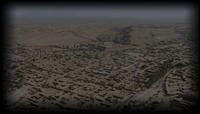-
Compact aerostat offers affordable, portable surveillance solution

Columbia, Maryland-based TCOM last week unveiled its newest aerostat platform, the 12M Tactical Aerostat. The system is designed to meet the needs of soldiers and first responders who require a compact, affordable, persistent surveillance solution which can be transported anywhere, rapidly deployed, and easily retrieved.
-
-
Iran indicates willingness to rethink nuclear program in exchange for sanction relief
As part of a series of steps designed to present post-election Iran as more pragmatic, President Hassan Rouhani and his advisers indicated they would be willing to consider curbs on Iran’s nuclear program in exchange for relief from the crippling economic sanctions imposed on Iran. Some Western experts say that all these steps are more than mere cosmetic changes, while skeptics note that Obama has reached out to Iran before, with no results. Veterans of past nuclear negotiations with Iran also noted that it is likely that Rouhani’s team may not yet fully understand the kinds of concessions that the Islamic republic would be required to make to have the most painful economic sanctions lifted.
-
-
Teams show robust radio techniques at Spectrum Challenge event

Radios are used for a wide range of tasks, from the most mundane to the most critical of communications, from garage door openers to first responders to military operations. Wireless devices often inadvertently interfere with and disrupt radio communications, and in battlefield environments adversaries may intentionally jam friendly communications. To stimulate the development of radio techniques that can overcome these impediments, the agency launched its Spectrum Challenge — a competitive demonstration of robust radio technologies that seek to communicate reliably in congested and contested electromagnetic environments without direct coordination or spectrum preplanning.
-
-
Updated, expanded “Crime Scene Investigation” guide now available
Investigators and first responders can find the latest recommendations on crime scene investigations in the newly updated Crime Scene Investigation, A Guide for Law Enforcement.
-
-
Pentagon to review security clearance procedure, military base security
Defense Secretary Chuck Hagel acknowledged at a news conference on Wednesday that the procedure for granting security clearances will be looked at, and probably needed fixing, telling reporters that “a lot of red flags” about Alexis’s past behavior were missed. Among the questions will be whether more personal information — even short of information on a criminal conviction — should be looked at before a security clearance is granted, and whether security clearance reviews should be conducted more often. Hagel also announced that he had ordered a broad review of procedures at military bases around the world.
-
-
California mulls costly earthquake early-warning system
The price of an early warning system which would alert California officials about an earthquake within sixty seconds before a major temblor strikes would be $80 million. The California legislature passed a bill on 13 September, requiring the state to develop the earthquake warning system, but it is unclear whether Governor Jerry Brown will sign the bill.
-
-
NASA, DHS to demonstrate disaster rescue tool
NASA and DHS are collaborating on a new radar device which detects heartbeats of victims trapped in wreckage. The device, known as the Finding Individuals for Disaster and Emergency Response (FINDER), can locate individuals buried under as much as thirty feet of crushed materials, hidden behind twenty feet of solid concrete, or from a distance of 100 feet in open spaces.
-
-
UN inspectors' repot on gas attack points to Assad’s elite military units
Russia may say publicly that it does not know who launched the deadly 21 August gas attack on two Damascus neighborhoods, but the Russians must have had an inkling: Russia’s UN ambassador agreed to have an international team of weapon inspectors sent to Syria to investigate the 21 August attack on one condition: the inspectors’ mandate was narrowed to verifying that chemical weapons were used, but specifically prohibited the inspectors from assigning responsibility to the attack. Russia’s effort to shield Assad has resulted in a report, submitted Monday to the UN Security Council, which does not explicitly name the Syrian regime as the party launching the attack, but details buried in the report point directly at elite military formations loyal to Assad.
-
-
A new generation of odor-releasing materials for training dogs
Traditionally, the training of bomb-sniffing dogs has been a hazardous job, but newly developed odor-releasing materials could take the risk out of that work. Scientists are seeking to patent a novel system that can capture scents and release them over time.
-
-
U.S. still has 3,100 tons of chemical weapons to be destroyed
Last weekend’s U.S.-Russia agreement on Syria’s chemical weapons has put on hold a U.S. strike on Syria. The pause may allow a reflection on the fact that the United States possesses one of the world’s largest chemical arsenals. Sixteen years after a treaty banning of chemical weapons went into effect, the Unites States has 3,100 tons stored in Colorado and Kentucky.
-
-
Using spooks’ software to select wine
Delectable is a mobile application that allows users to explore wines by using technology currently employed to locate terrorists and prevent bank frauds. The application is considered to have the world’s largest database of wine, providing information on more than two million wines and offering users an option to purchase selected wines.
-
-
History of explosives highlighted in museum exhibit
For more than seventy years, Los Alamos National Laboratory has been a frontrunner in explosives research, development, and applications. To highlight the Laboratory’s work in the field of explosives, the Bradbury Science Museum is opening a new exhibit, titled “The Science of Explosives.”
-
-
Experts question ambitious Syria chemical weapons agreement
The announcements in Geneva by Secretary of State John Kerry and Foreign Minister Sergey Lavrov were bold: President Bashar al-Assad has a week to provide detailed, accurate, and comprehensive information about Syria’s entire chemical weapons program: research labs, production facilities, test sites, chemical storage depots, and munitions kept by every military unit. Experts say that the tight timetable the agreement requires for disclosure of stockpile, destruction of production facilities, and the destruction of the chemical weapons themselves, would not only set a speed record, but that that it cannot be accomplished even with Syria’s full cooperation.
-
-
Syria’s chemical program, inventory
The Syrian chemical weapons program began in the 1970s when the Hafez al-Assad regime purchased chemical munitions from the Soviet Union. In the 1980s, Syria launched a broad program of acquiring the materials, products, and knowledge necessary to set up an autonomous chemical weapons production capacity. In the nearly four decades of acquisition, research, development, and production, Syria has amassed what experts consider to be the world’s largest chemical weapons stockpile, consisting of about 1,000 tons of chemical agents and precursor chemicals.
-
-
More equitable access to DNA identification after disaster or conflict needed: experts
The April 2013 collapse of the Rana Plaza Factory Building in Bangladesh, in which more than 1,130 people were killed, is only the latest in a long line of events that has made plain the plight of the families whose loved ones go missing after conflict and disaster. Experts argue that international structures are needed to promote more equal access to forensic identification technologies, ensure their fair and efficient use, and provide uniform protections to participants following large-scale conflict and disaster.
-
More headlines
The long view
Tantalizing Method to Study Cyberdeterrence
Tantalus is unlike most war games because it is experimental instead of experiential — the immersive game differs by overlapping scientific rigor and quantitative assessment methods with the experimental sciences, and experimental war gaming provides insightful data for real-world cyberattacks.
Using Drone Swarms to Fight Forest Fires
Forest fires are becoming increasingly catastrophic across the world, accelerated by climate change. Researchers are using multiple swarms of drones to tackle natural disasters like forest fires.
Testing Cutting-Edge Counter-Drone Technology
Drones have many positive applications, bad actors can use them for nefarious purposes. Two recent field demonstrations brought government, academia, and industry together to evaluate innovative counter-unmanned aircraft systems.
European Arms Imports Nearly Double, U.S. and French Exports Rise, and Russian Exports Fall Sharply
States in Europe almost doubled their imports of major arms (+94 per cent) between 2014–18 and 2019–23. The United States increased its arms exports by 17 per cent between 2014–18 and 2019–23, while Russia’s arms exports halved. Russia was for the first time the third largest arms exporter, falling just behind France.
How Climate Change Will Affect Conflict and U.S. Military Operations
“People talk about climate change as a threat multiplier,” said Karen Sudkamp, an associate director of the Infrastructure, Immigration, and Security Operations Program within the RAND Homeland Security Research Division. “But at what point do we need to start talking about the threat multiplier actually becoming a significant threat all its own?”
The Tech Apocalypse Panic is Driven by AI Boosters, Military Tacticians, and Movies
From popular films like a War Games or The Terminator to a U.S. State Department-commissioned report on the security risk of weaponized AI, there has been a tremendous amount of hand wringing and nervousness about how so-called artificial intelligence might end up destroying the world. There is one easy way to avoid a lot of this and prevent a self-inflicted doomsday: don’t give computers the capability to launch devastating weapons.
